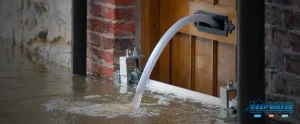If you think about it, many of us spend most of our time indoors, whether in our own homes or while at work. It only means indoor air quality is essential for our overall well-being as it plays an important role in keeping all occupants of a building safe and healthy. This is especially true right now when we’re still in the middle of a global health crisis.
This article will examine the relationship between indoor air quality and health, particularly as it relates to the pandemic. We’ll also discuss how you’ll know if you have poor indoor air quality and what you can do to improve it.
What is Poor Indoor Air Quality?
Indoor air quality (IAQ) is the term referring to the quality of the air we breathe within and around buildings and structures. Because we breathe about 20,000 times a day and spend most of our time indoors, IAQ has a direct relation to our health and comfort.
Poo indoor quality has been linked to many health issues, including headaches, exhaustion, poor concentration, and eyes, nose, throat, and lung irritation. Additionally, studies have shown that several specific ailments (asthma, for instance) and damp indoor settings, air pollutants, and other bad indoor air conditions have direct connections.
Which Factor Would Increase Poor Indoor Air Quality?
Knowing what influences the air you breathe is the first step to changing it. Here are the top five elements that contribute to poor indoor air quality in your home or workplace:
1. Particles in the air, such as dust
Including dirt, pet dander, and dead skin, dust is a mixture of indoor and outdoor particles. Individuals with high sensitivity to dust may experience breathing issues in heightened concentrations, which may result in difficulty breathing, chest tightness, or lack of sleep.
Improve poor indoor air in your home by taking simple measures like frequently vacuuming, cleaning surfaces with microfiber towels, and changing your linens once a week.
2. Molds
Since they result in excessive moisture in floors, walls, and ceilings, plumbing problems are typically to blame for the development of mildew and mold. Besides causing allergic reactions, exposure to mold is known to raise the risk of respiratory issues and set off asthma episodes in people.
Homeowners must address their plumbing difficulties as soon as possible to resolve this issue and improve poor indoor air.
3. Chemicals
The cleaning products we use to keep our homes tidy may be really doing more damage than good. These are present in paints, aerosol sprays, and wood preservatives. Switching to organic products from chemical-based ones is a straightforward solution. Instead of using bleach to clean, try using homemade cleaners like your own concoction of baking soda, vinegar, and lemon juice.
3. Humidity
Too much humidity indoors might encourage the growth of microorganisms. If there is excessive moisture in the air, one alternative is to use a dehumidifier. Alternatively, for an even easier fix, consider opening a window or turning on the exhaust.
4. Ventilation
The presence of excessive carbon dioxide levels in your house as a result of inadequate ventilation aggravates poor indoor air quality and may be the cause of headaches, hypersensitivity, and weariness. ”
One easy option to increase ventilation and improve poor indoor air without using specialized heating and cooling systems is to open the windows and allow some fresh air in. Of course, this is only advisable for buildings or homes located in an area with good outdoor air quality. If, however, you’re in the heart of a polluted city, it’s best to invest in a good ventilation system.
What are Poor Indoor Air Quality Symptoms?
The common belief is that the best way to minimize air pollution is to remain indoors. The Environmental Protection Agency asserts that, in some cases, indoor air may be more contaminated than outdoor air. These five health issues are caused by poor indoor air quality:
- Chronic Obstructive Pulmonary Disease (COPD)
- Lung Cancer
- Common Colds
- Cardiovascular Disease
- Asthma
How Covid is Transmitted in the Air
Droplets of various sizes, which can contain the virus, are released into the air when patients with COVID-19 exhale out, clear their airways, cough, sneeze, talk, or act in any other way that causes air and droplets to leave their nose or mouth. These are the most common modes of airborne COVID transmission. Around 40% of those who are infected with COVID-19 may not even be aware that they are ejecting virus-filled droplets since they do not always show symptoms.
Since most of us spend the majority of our time indoors due to the pandemic, the significance of maintaining good indoor quality has been made clear more than ever. Even before the outbreak, indoor air quality issues were widespread and, if nothing is done about them, COVID-19 will continue to ravage us for a long time.
Ventilating a Room for COVID
Improve the air movement in your home, bring in some fresh air, and filter the air. You can decrease the number of virus particles in your house and prevent the spread of COVID-19 by improving ventilation. You could or might not be aware of whether a resident of your house or a guest has COVID-19 or another respiratory virus.
Here are some suggestions on how to ventilate a room for COVID:
- Ensure that your home has enough fresh air
- Purify the air in your house
- Use a portable air purifier
- In your kitchen and bathroom, turn on the exhaust fan
- Improve airflow by using fans
Key Takeaway
Knowing the sources and effects of indoor air pollution will increase your awareness of why poor indoor air should be addressed and what you can do to prevent it. You can find the finest solutions for you and your family and make even minor adjustments around your home that may have a big impact.
COVID-19 Decontamination in Colorado Springs can help purify the air you breathe indoors.
Indoor air quality issues can be harmful to everyone’s health and poor indoor air quality can have a significant negative impact on those with lung conditions, allergies, or asthma. Knowing more about air contaminants will help you recognize them and know how to eliminate them.
Ensuring that your home and workplace enjoy clean indoor air is our priority at Deep Water Emergency Services and Mitigation. We are a Dallas water damage mitigation company that can help control the pollutant’s source first for optimal indoor air quality and find ways to keep your indoor space properly ventilated. Call us now!






